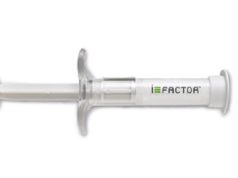
Paediatric patients with severe spinal deformity are at a high risk of revision surgeries. Presenting his research at the Global Spine Congress (GSC; 2–5 May, Singapore), Munish Gupta (Department of Orthopedics, Washington University, St. Louis, USA) reported a 12% instrument-related complication rate following surgical treatment for severe paediatric deformities. Gupta and colleagues were awarded the best e-poster award for their work.
The prospective, observational, multi-centre study followed a cohort of 176 paediatric patients across 11 centres for a minimum of two years’ post-surgery correcting a severe spinal deformity. A severe deformity is defined by the investigators as a spinal curve greater than 100°, or as a deformity necessitating a vertebral column resection. Gupta described this patient cohort to Spinal News International as “some of the most challenging patients.”
Twenty-one (12%) children experienced complications resulting from the instrumentation, and 15 patients (9%) required revision surgeries due to instrumentation failure or pseudarthrosis. Of these 15 patients, one underwent revision surgery twice. The average time for revision surgery was 18 months postoperatively. The researchers also found that a further six patients (3%) had complications, but did not undergo any revision surgeries.
This high rate of revision surgeries in surgically treated paediatric patients with severe spinal deformities was expected, due to the complex nature of the necessary operative procedures.
Speaking to the GSC audience, Gupta explained how severe paediatric deformities can be challenging to treat, due to difficulties with instrumentation placement in small patients, stress on implants due to correction of severe deformities, and the destabilisation effect of three column osteotomies, a high-risk, deformity-correcting surgery involving removal of the vertebra from around the spinal cord, removing all the bone around the spinal cord before bending the spine into the desired shape and securing with screws and rods. Gupta explains that while removal of the vertebral body and posterior elements “gives some freedom to manipulate the deformity to more how the spine should be”, it is a highly complex surgery.
In addition to the possibility of revision surgeries being necessary, complications affected patients’ self-image and satisfaction. There was a significant association between a complication arising after surgery, and a lower reported self-image at two years’ follow-up. Patients who did not experience a complication during surgery rated their self-image as 4.17 out of a possible score of 5.0, compared with those who had a complication rating their self-image an average of 3.66 (0.51 difference between the two ratings, P=0.0003).
Lower patient satisfaction at two-year follow-up was also associated with surgical complications. The mean value patients assigned to their satisfaction two years after surgery was 4.54 with no complications, compared to 4.17 if they had experienced a complication—patients with complications rate their satisfaction as 0.38 points less than those without surgical complications (P=0.0195).
Pain, function and mental health were unaffected by whether or not a patient had experienced surgical complications: there were no significant differences in patient reported outcome measures for these factors between patients who had complications, and those who did not.
Speaking to Spinal News International, Gupta explains how these paediatric patients with complex spinal deformities “require close and continued follow-up after two years.” There are plans to continue this work, with Gupta and colleagues planning on monitoring these patients to ultimately acquire five-year follow up data. “We are going to see if patients continue to have problems up to five years post-operatively. They may not have experienced any surgical failure after two years, but we do not know if that means they will not experience failure later on. Or, the rate of failure and complications may be the same after five years as after two. We do not know yet, which is why we are studying it. I think the healing should be done by two years, but we do not know for sure.”
Funding for this research was provided by a generous gift by Marcella Fox through the Fox Pediatric Spinal Deformity Study Group, of which Gupta is the primary investigator and his study co-authors are members.













